About Camarasaurus
| Scientific Name (Genus) | Camarasaurus |
| Name Meaning |
Chambered Lizard
kamara (chamber/cavity) [Greek] - sauros (lizard) [Greek] |
| Classification | Saurischia, Sauropodomorpha (Sauropoda) |
| Total Length | Approx. 15-23m |
| Diet | Herbivore |
| Period | Late Jurassic (Approx. 155-145 million years ago) |
| Species |
Camarasaurus grandis
Camarasaurus lentus Camarasaurus lewisi Camarasaurus supremus |
| Year Described | 1877 |
| Publication |
On a gigantic saurian from the Dakota eopoc of Colorado.
Palaeontological Bulletin (25). by E. D. Cope. 1877. |
Characteristics
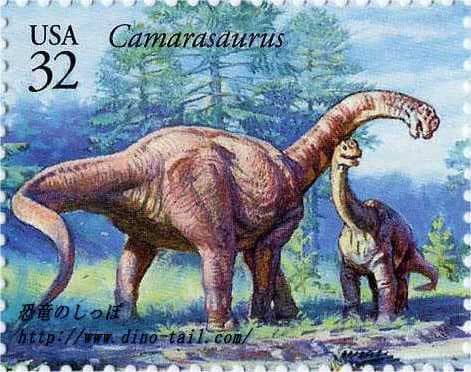
Camarasaurus was one of the most prosperous sauropodomorphs in North America during the Late Jurassic.
Its total length was 15-23m. Its estimated weight reached 20 tons, which was not particularly large for a Late Jurassic sauropod.
Its neck and tail were relatively short compared to other sauropods. Although its forelimbs were slightly shorter than its hind limbs, its back was kept mostly horizontal. Its four limbs, supporting this huge body, were thick pillars like those of a modern elephant, a structure that efficiently supported its weight with the skeleton itself rather than with strenuous muscles. This body type suggests a design suited for stable feeding on medium-height vegetation, rather than specializing in high or low browsing.
Individuals of adults and juveniles have been found together, suggesting they may have lived in herds.
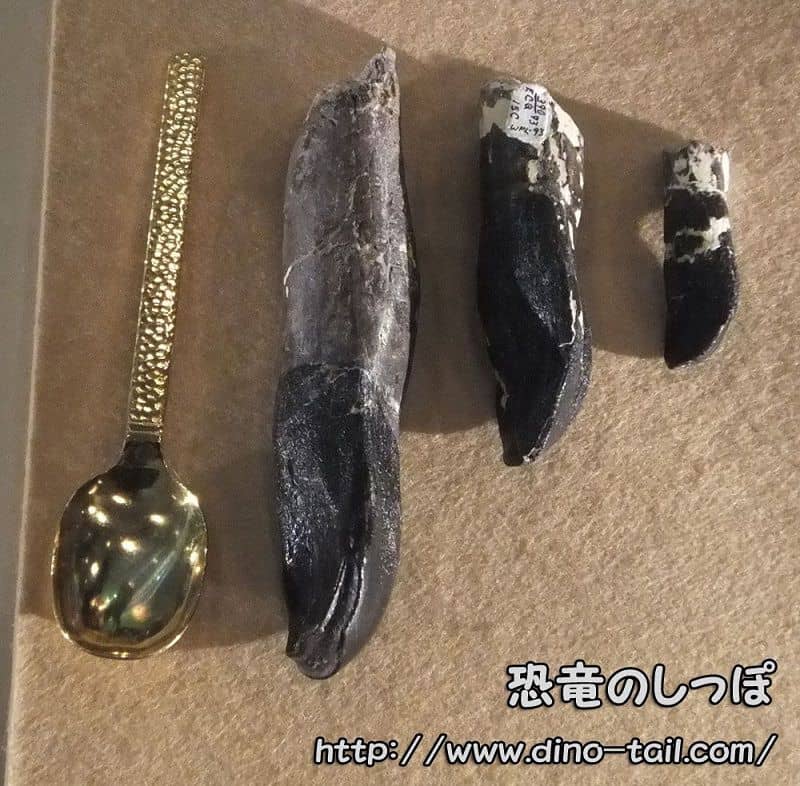
It has a 'spoon-shaped' form. It was thicker and more robust compared to those of Diplodocus, etc.
Camarasaurus's teeth were thicker and more robust compared to those of Diplodocus. According to a 2006 publication, it was found that their teeth were replaced every 62 days on average.
Like other sauropodomorphs, stones (gastroliths) to aid digestion have been found in their stomachs, but the robust teeth that were replaced in short cycles suggest they may have eaten tougher vegetation or ground up plants in their mouths (chewing).
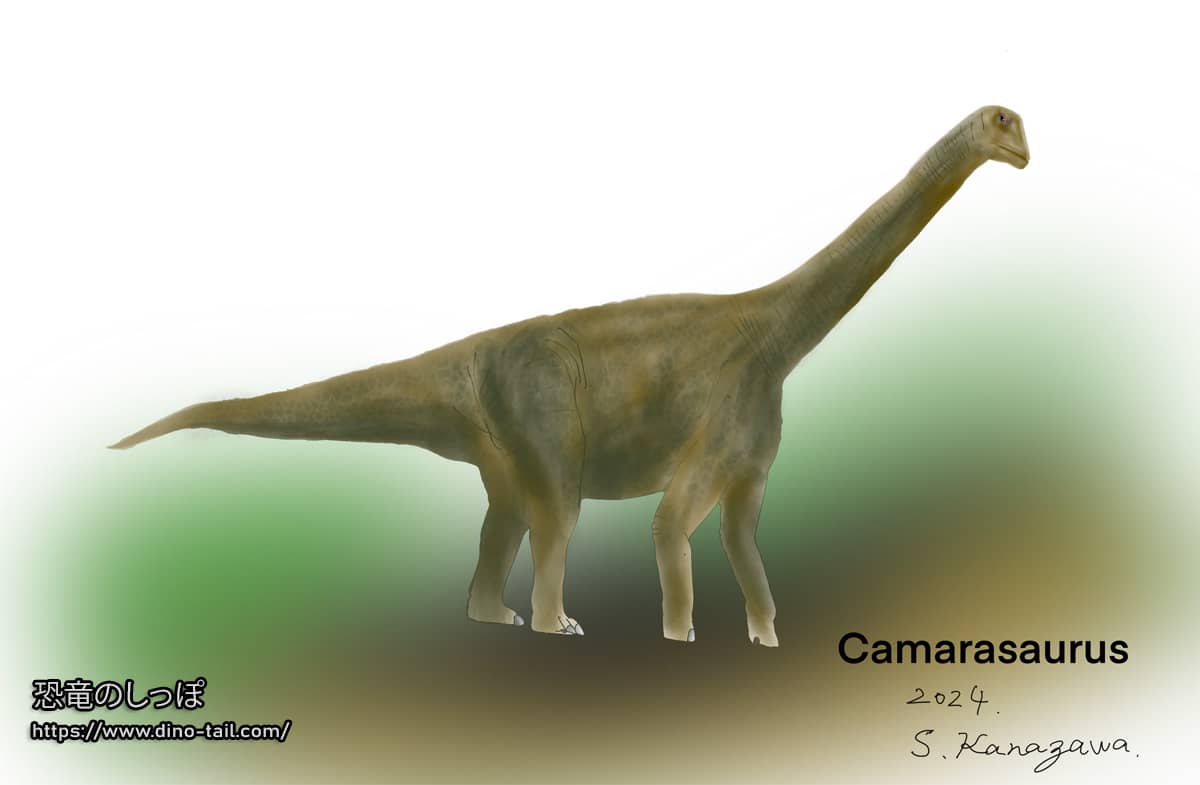
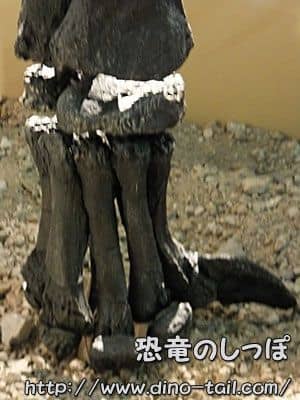
Each massive foot had five toes, and the inner toe bore a large, sharp claw for defense.
Skeletal fossils from various growth stages have been excavated, helping to understand the ecology of sauropodomorphs.
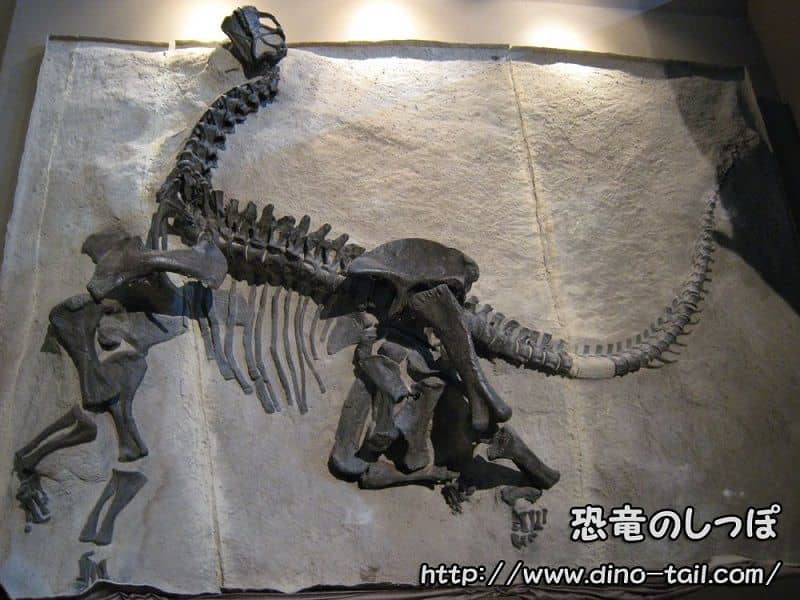
Long-Distance Migration of Camarasaurus
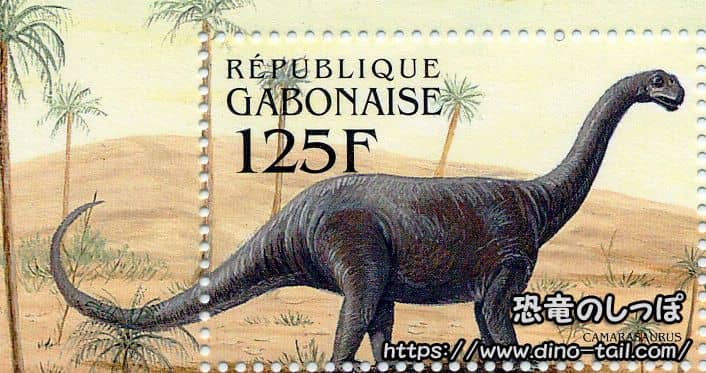
The Morrison Formation in North America, where Camarasaurus lived during the Late Jurassic, was a vast floodplain with a semi-arid climate characterized by distinct dry and wet seasons.
In 2011, the University of Colorado announced research results from analyzing Camarasaurus tooth fossils.
It was found that "Camarasaurus migrated long distances of about 300 km seasonally each year."
How can traces of long-distance migration be found in tooth fossils?
Camarasaurus replaced its teeth about every 5 months. The research team focused on the "different ratios of oxygen isotopes in highlands (mountains) and lowlands (plains)" and the "tooth replacement period." Higher elevations tend to have lower levels of oxygen-18. When Camarasaurus drank water, oxygen isotopes were incorporated into its body and formed tooth enamel. The change in the proportion of oxygen isotopes was investigated in about 30 tooth fossils.
The results showed that the proportion of oxygen-18 was completely different between the base (root) and the tip (crown) of the teeth.
This indicated that Camarasaurus moved between highlands (mountains) and lowlands (plains) within a 5-month period.
It is highly likely that they left the lowlands, where food plants became scarce during the dry season, and moved to the mountains where vegetation was more abundant, returning to the lowlands when the rains came.
The Most Abundant Sauropod in the Morrison Formation - Survival Strategy
In the Morrison Formation, several giant sauropods, such as Diplodocus, Apatosaurus, and Brachiosaurus, coexisted with Camarasaurus. It is believed they could coexist without constantly fighting over food due to clever "niche partitioning" based on differences in diet and feeding methods.
As mentioned, Camarasaurus ate tough plants like conifers with its sturdy, spoon-shaped teeth. In contrast, Diplodocus had delicate, pencil-shaped teeth concentrated at the front of its mouth, which it is presumed to have used to rake up soft plants like ferns growing near the ground. By eating different types of plants at different heights, they avoided direct competition and were each able to secure enough food to maintain their massive bodies.
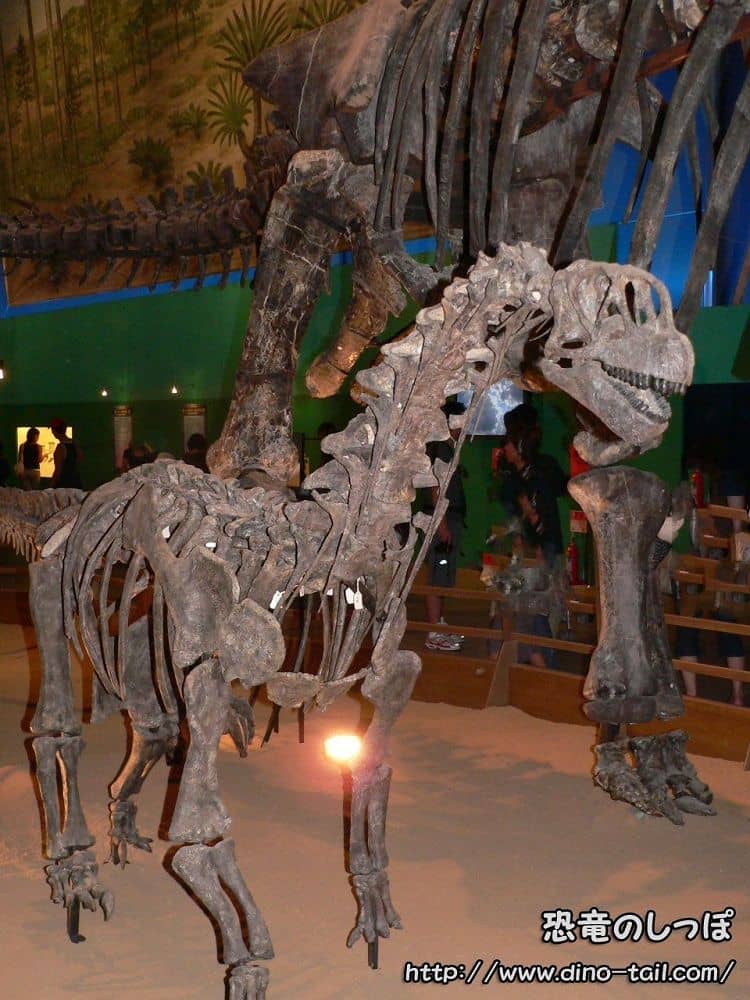
At the top of the ecosystem in the area where Camarasaurus lived were large carnivorous dinosaurs like Allosaurus. A Camarasaurus pelvic fossil discovered at Dinosaur National Monument has scratch marks believed to have been made by Allosaurus teeth. This is evidence that Camarasaurus was indeed preyed upon by Allosaurus. While an adult's massive size was a weapon in itself, young, smaller individuals were constantly exposed to the threat of predation. It is thought they desperately defended themselves by crushing enemies with their large bodies or by swinging their relatively short but powerful tails like whips.
The fact that Camarasaurus is the most commonly found sauropod in the Morrison Formation may seem strange, considering it was neither the "largest" nor the "longest."
However, the key to its success is presumed to be its "versatility," not being overly specialized for a specific environment, and the high "adaptability" this provided. Its robust teeth allowed it to eat tough plants that other sauropods did not, or could not, use. This was a decisively advantageous ability for survival in a semi-arid climate with drastic seasonal changes and sometimes scarce food. A generalist that could eat many types of plants was more likely to survive than a specialist dependent on specific plants. The success of Camarasaurus was not due to its immense size or bizarre morphology, but rather to its "modest size" and "robust diet"—a solid survival strategy.
Cope and Marsh's Fossil Feud
In 1877, Oramel W. Lucas, a local schoolteacher in Colorado, USA, discovered fragmentary vertebrae fossils.

Source: On the Vertebrata of the Dakota Epoch of Colorado. the American Philosophical Society, Vol. 17, No. 100. by E. D. Cope. 1877.
Edward Drinker Cope bought these fossils and described Camarasaurus within the year 1877.
The scientific name Camarasaurus comes from the Greek words "kamara" (chamber/cavity) and "sauros" (lizard), meaning "chambered lizard." This refers to the characteristic cavities called "pleurocoels" found in the cervical (neck) and dorsal vertebrae.
It is believed that these cavities, much like the bones of modern birds, housed parts of the respiratory system called "air sacs," which served to significantly reduce the weight of the massive skeleton. This was a sophisticated solution for efficiently supporting a giant body weighing up to 20 tons and moving it actively.
Othniel Charles Marsh also described a new sauropod genus and species, Morosaurus grandis, in the same year, but it is now considered a species of Camarasaurus.
Following this, a series of well-preserved fossils were discovered, and in 1925, Charles W. Gilmore reconstructed a high-accuracy Camarasaurus.
Although Edward Cope named the genus Camarasaurus, both Edward Cope and Othniel Charles Marsh are mixed as the namers (describers) at the species level below it.
| Year Described | Author | Species Name |
|---|---|---|
| 1877 | Edward Drinker Cope | Camarasaurus supremus |
| 1877 | Othniel Charles Marsh | Camarasaurus grandis |
| 1889 | Othniel Charles Marsh | Camarasaurus lentus |
Topics
An actual Camarasaurus skeleton is on permanent display at the Gunma Museum of Natural History, and a skull fossil is at the National Museum of Nature and Science in Ueno, Tokyo.

The Camarasaurus full-body skeleton displayed at the Fukui Prefectural Dinosaur Museum was discovered in Wyoming, USA, in 2007 and purchased by the museum in 2009. Over 90% of the entire skeleton is assembled from real fossils, not replicas, and its presence and realism are unparalleled. The massive 15-meter-long skeleton is the culmination of "Project Camarasaurus," in which the museum independently handled everything from fossil cleaning to research and assembly. It is a symbolic specimen that demonstrates the high level of dinosaur research in Japan both domestically and internationally, and its presence leaves an unforgettable impression on visitors.
In 2008, the American company UGOBE released a companion (pet) robot named
The 30cm long, 1.5kg robot
Camarasaurus Stamp & Fossil Gallery



